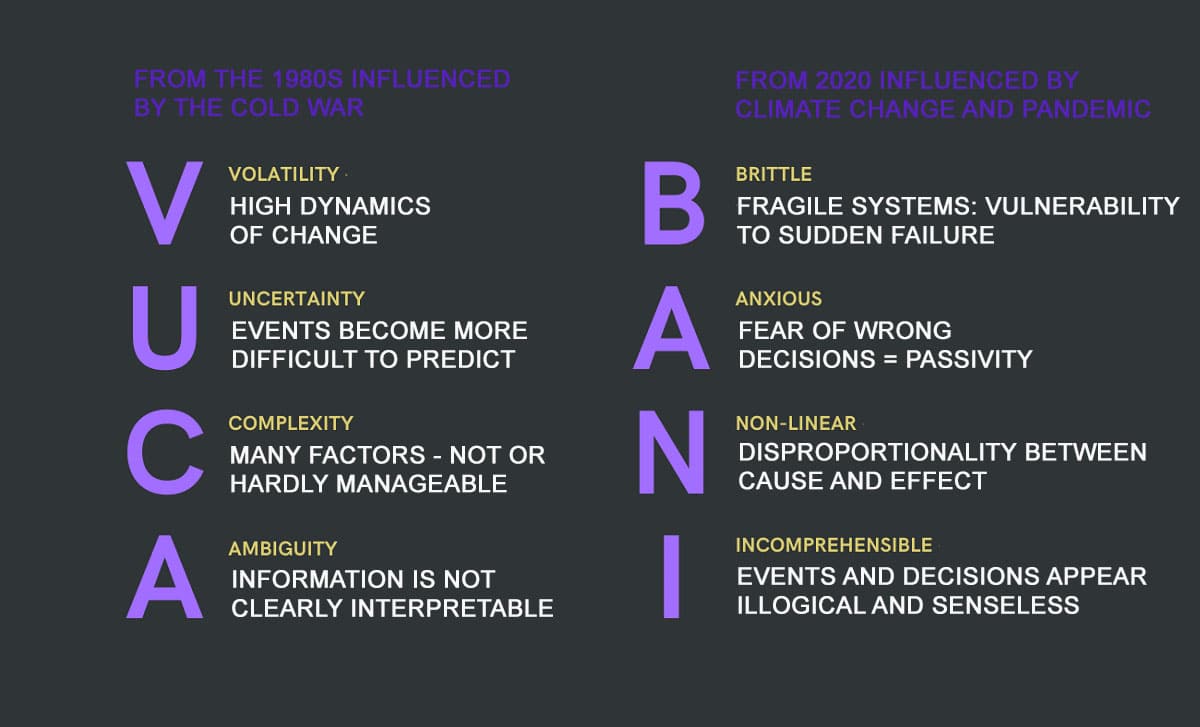Agility as a buzzword? Yes, please!
Expand the table of contents
Agilists, agile coaches or scrum masters are certainly on the verge of catching their breath. For good reason, after all, the outcry for not using agility as a buzzword is itself a “buzz sentence”. Nevertheless, they should use agility as a buzzword. Find out why and when here.
What actually is a buzzword?
Probably the best-known synonym for buzzword is ” beating a buzzer”. Symbolically, you can imagine how we “hit” a buzzer to give ourselves the floor. It doesn’t sound so bad to first draw attention to oneself and at the same time make oneself heard. After all, it is high time for agility. Those who don’t realise this now will lose in the long run, won’t they? Well, the question arises:
Whose attention is to be grabbed?
And why? Many companies have now recognised that there is something there: ” Agility”. Obviously, you need it these days.
But for what? This is where the buzzword’s journey begins, because if you don’t know what agility is needed for and accordingly haven’t recognised the benefits of an agile organisation, you won’t be able to use agility as anything other than a buzzword in the first place.
The result: if the economic benefits are not recognised, the necessary fundamental changes are not considered important enough either.
Agile working is not the mere use of methods, frameworks or practices, but applied correctly, it is first and foremost a state of being. Working agile without being it is, as Loriot would put it, “possible, but pointless”. In practice, agile working without being agile is not purposeful and often proves to be a trouble spot.
The problem with change
The problem here is mainly seen in the entrenched ways of thinking about measuring results. To counteract this, the right questions must be asked about the correct measurability and it must be clear what is actually to be achieved. The vision, the goal or, as Simon Sinek says, the “why”. Appropriate questions to determine the “why” could be as follows:
What acute challenges do we have?
- Are processes too slow?
- Dissatisfied employees?
- Dissatisfied customers?
- Costs too high?
- Lack of competitiveness?
What is the reason?
- Does the offer not (any longer) meet the market’s expectations?
- Are employees too unmotivated? And if so, why?
- Is it the evil shortage of skilled workers?
And, of course, again and again: and why?
The list can be continued ad infinitum, but I hope that you can at least get a first impression of the necessary thought processes that need to be changed.
Agility – the unattractive buzzword
Why does the buzzword agility have such a bad reputation? It is particularly tainted with negativity when the practical application and living of that agility is non-existent or poor. It seems as if it is exclusively about companies ascribing the word to themselves without actually living it. This is evident, for example, in statements such as: “We are agile, we have a Kanban board.”
Methods, frameworks and practices are wonderful as tools and, depending on the degree and openness of the organisation, also as a first measurable approach. However, using a tool does not make an organisation agile or to illustrate: A good knife does not make a star chef.
Unfortunately, this is also often seen in various training or consulting providers who realise that agility is a cow that is not only to be milked, but at best completely cannibalised. Adding the word “agile” to old familiar roles or procedures not only opens up new markets but also the wallets of potential customers.
And yes, as a provider of agile organisational development and business management, I don’t take myself completely out of the equation there either, but this is where the circle closes.
Because it’s no use running around with the agile flag and wanting to put this stamp on everything. On the contrary, sometimes this flag quickly turns into a “red flag”, which is seen more as a warning than an invitation. This is the point at which the term “buzzword” becomes unattractive. This unattractiveness then also collides with the necessity that “being agile” entails more than ever.
So what to do?
The best time for change
You know by now that the problem is not in the words, but in the (lack of) application.
How is agility, the advantages but also the challenges, actually applied in practice?
First of all, it is important to understand that we don’t have to give everything a name. Employees must not feel overwhelmed with innovations, and partners or customers do not have to be addressed directly. Transparency is an important value, but it does not mean that everyone involved automatically speaks the same language. Not even when identical goals are to be achieved.
In particular, employees who are involved in operational business often feel put off by “fancy” terms instead of being taken on board. Reasons for this are bad experiences, fear or because they have heard from other sides what buzzwords can do. Especially when there is a lot of talk, but little is done for the people involved with their individual goals.
The desire for change and above all improvement lies dormant in many employees. And customers certainly won’t say no to faster feedback and better products. This is not a fashion trend, but rather expectations that will continue to grow despite increasing intransparency and unpredictability.
At this point, the acronym VUCA is often referred to, which has already been replaced by BANI. Depending on one’s own point of view or associations, one can find a classification in one or the other representation. In the following diagram, I will provide you with both and you can decide for yourself which classification you would like to make at this point in time. Both acronyms are also given their own approach to a solution, but this would deviate too far from the original topic at this point.
It is obvious that many things cannot continue as before. Technologies and innovations are constantly changing at such a rapid pace that today’s innovations may already be obsolete by the end of the day. You can close your eyes to this, but in the long run you will be steering the boat against a wall. Those who refuse to restructure their own company in such a way that it can react to these changes and meet the current and future demands of the market will not remain viable in the long term. The current times, especially the presence of the shortage of skilled workers and the energy crisis, show this quite clearly.
But given these circumstances, is this even the right time for such a change? Is it not already too late or should priorities be set differently?
The best time for an agile transformation has already passed, but how could one have known without “agility” being buzzed about? Lack of presence leads to lack of attention, but don’t worry: the second best time for change is always now. Now that your attention has been buzzed and at the same time you have understood that just using the word is not enough.
Conclusion
Something always gets buzzed. Meanwhile, it is even “postagility”. We don’t have to give everything a name. Instead, ask yourself what you want to achieve.
Live change, evolve, create new spaces and sometimes use a buzzer to make yourself heard. Because depending on who you want to reach, it is necessary and just right.
The definition of agility varies widely. It becomes a “bad buzzword” especially when basic contents are not understood.
Agility as a buzzword? Yes, please! It is important that the understanding is the same. That overlaps are discussed openly:
- How is agility defined?
- Am I willing to work at the grassroots level?
- If not, am I willing to work with people who have an identical definition of agility?
- Or is it not even better to engage in conversation with those who have a different one?
- What can I do to transparently communicate my own definition of agility?
We will never find 100 per cent agreement in the definition of the word, so it is all the more important to enter into an open dialogue already when using the word.
If it fits, if it serves to create attention, if it serves to create better results as well as a space to create those results. When we can use it to make a difference and anticipate doing so. Yes, then agile as a buzzword is exactly what we need.
We will not stop the use of buzzwords. Understanding why and when your counterpart uses them is guaranteed to be beneficial. And as you know, sometimes you just have to buzzword to trigger change.
Notes:
Are you interested in concrete suggestions to implement agile thinking and action in your company? Then visit Vanessa Steffen’s beautiful German website at https://truelutions.de/ and get in touch with her.
If you like the post or want to discuss it, feel free to share it in your network.
Vanessa Steffen has published three more posts in the t2informatik Blog:

Vanessa Steffen
Vanessa Steffen founded Truelutions with the intention of supporting future-oriented companies in the field of agile organisational development and corporate management. In doing so, she brings together the needs of employees and employers while ensuring economic efficiency.
In the t2informatik Blog, we publish articles for people in organisations. For these people, we develop and modernise software. Pragmatic. ✔️ Personal. ✔️ Professional. ✔️ Click here to find out more.




